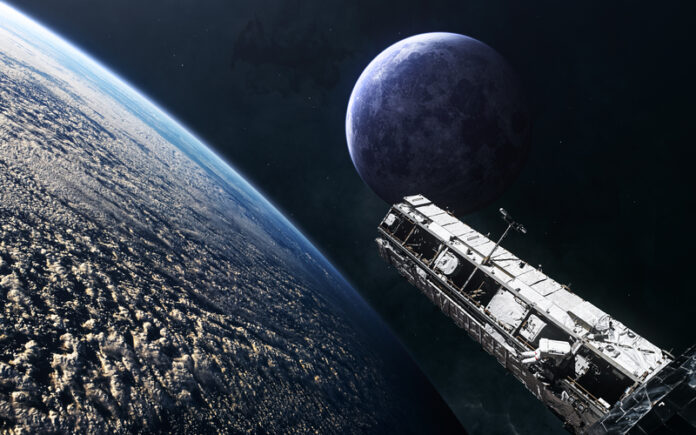
According to Space Capital, a company focused on investing in space enterprises, in its latest report, it notes that the first quarter of 2024 has seen a 33% quarter-over-quarter rise in money going into the space business space. Over the last decade, more than US $286 billion in venture capital has been doled out to 1,779 companies focused on building space-based businesses. In the last quarter alone, 103 companies raised $6.5 billion.
American companies continue to dominate a maturing space industry and are looking for low-Earth-orbit, lunar and Deep Space opportunities. They have received 66% of the money invested. SpaceX and Blue Origin account for almost half of the total. Besides them and other U.S. companies, investment capital is being raised for ventures from China, Japan, Singapore, India, France, Germany, The United Kingdom, Italy, Canada and New Zealand.
Commercial space companies like SpaceX and Blue Origin have become well-known today. Another, Rocket Lab, from New Zealand, has been making a name for itself with a burgeoning launch business and a demonstration of reusability. Sierra Space and Axiom are establishing themselves in low-Earth orbit ventures through contracts with NASA. SpaceX, Boeing and Blue Origin are NASA suppliers of goods and services. Recently, Intuitive Machines, Lunar Outpost and Venturi Astrolab have won Artemis Program contracts to supply lunar surface mobiles.
NASA has contracted several private companies for future missions including Artemis. These include:
- Northrop Grumman provides resupply capsules to the International Space Station (ISS) and has been contracted to do work on a commercial space station and the Artemis Program.
- Special Aerospace Services is designing robots and service modules for the ISS and future programs.
- ThinkOrbital Inc. is designing space infrastructure and orbital platforms.
American wannabes include lesser-known names:
- ICON is a 3D-printing company with plans to build habitations on the Moon and Mars using at-hand regolith materials.
- Varda Space Industries is a manufacturer developing technology for the microgravity environment to create products for use in space and on Earth.
- True Anomaly is a company focused on building robust space security and is working on projects for the U.S. Space Force.
Joining these are several companies that have raised venture capital outside of the U.S:
- D-Orbit is an Italian company focused on building and deploying a constellation of satellites to clean up low-Earth orbit space junk.
- Qosmosys is a Singapore company developing a spacecraft called ZeusX to support lunar infrastructure with links to NASA’s Artemis Program.
- NorthStar Earth and Space is a Canadian company intent on building satellites to monitor space traffic from space.
- The Exploration Company is a German-French commercial collaboration building a modular space capsule called Nyx whose demonstration flight is planned for this year with full deployment in 2026.
- Orbex is a UK company building a two-stage rocket called Reflight with a reusable first stage designed for low-velocity reentry.
- Shanghai Spacecom Satellite Technology (SSST) is a municipal government-backed company that has raised nearly $1 billion to finance a constellation of low-Earth orbit communication satellites called the G60.
Then there is VAST Space, a company with an aggressive timeline and a sole investor named Jed McCaleb who as a software engineer has made his money through cryptocurrency applications. He is estimated to be worth more than $2 billion. He is not looking for other investors yet and plans to deploy the first commercial space station in low-Earth orbit sometime next year.
VAST has recently announced plans to use the SpaceX Starlink laser communication network for the station called Haven-1. It will be launched on a Falcon 9 rocket and use Dragon capsules to send four people up to it for 30-day missions. The Starlink laser network will provide high-speed, Wi-Fi Internet access to Haven-1 for video and voice communications with Earth.
A demo version of Haven is planned for launch this year. Haven-1 is scheduled for launch in the second half of 2025. Haven-1 will feature both a microgravity and lunar artificial gravity environment. The station is designed to stay in orbit for three years and de-orbit itself when no longer in use.
A seven-metre Haven space station replacement will follow. It is too big to be launched by a Falcon 9 and will use the SpaceX Starship for deployment. It will be the first to offer inhabitants an artificial gravity environment. Subsequently, 6 additional modules will be daisy-chained to it and provide microgravity, Earth, Venus, Mars, and Moon gravity environments. The seven modules will accommodate up to 8 inhabitants.
Other commercial space stations are in the works with NASA investments made in projects from Axiom, Starlab and Orbital Reef (a joint venture involving Sierra Space and Blue Origin). These named projects are the ones that NASA has in mind to replace the ISS sometime around 2030. The projects have received about a half billion dollars to build a replacement ISS that cost $100 billion when constructed.
How is it possible to build replacements for the ISS with such little money? The opportunity for venture capital markets to get involved is real knowing that the revenue these ISS replacements will earn will come from renting space in space and providing services to tenants like NASA, other countries’ space agencies, and private enterprises.
Does the math add up? Currently, I would say no. If I were a betting man I would put my money on ISS to be extended beyond 2030. Meanwhile, China will expand or replace its existing Tiangong station, an ISS mimic. I’m not sure the noise and announcements from Roscosmos for a Chinese-Russian space station are real.








